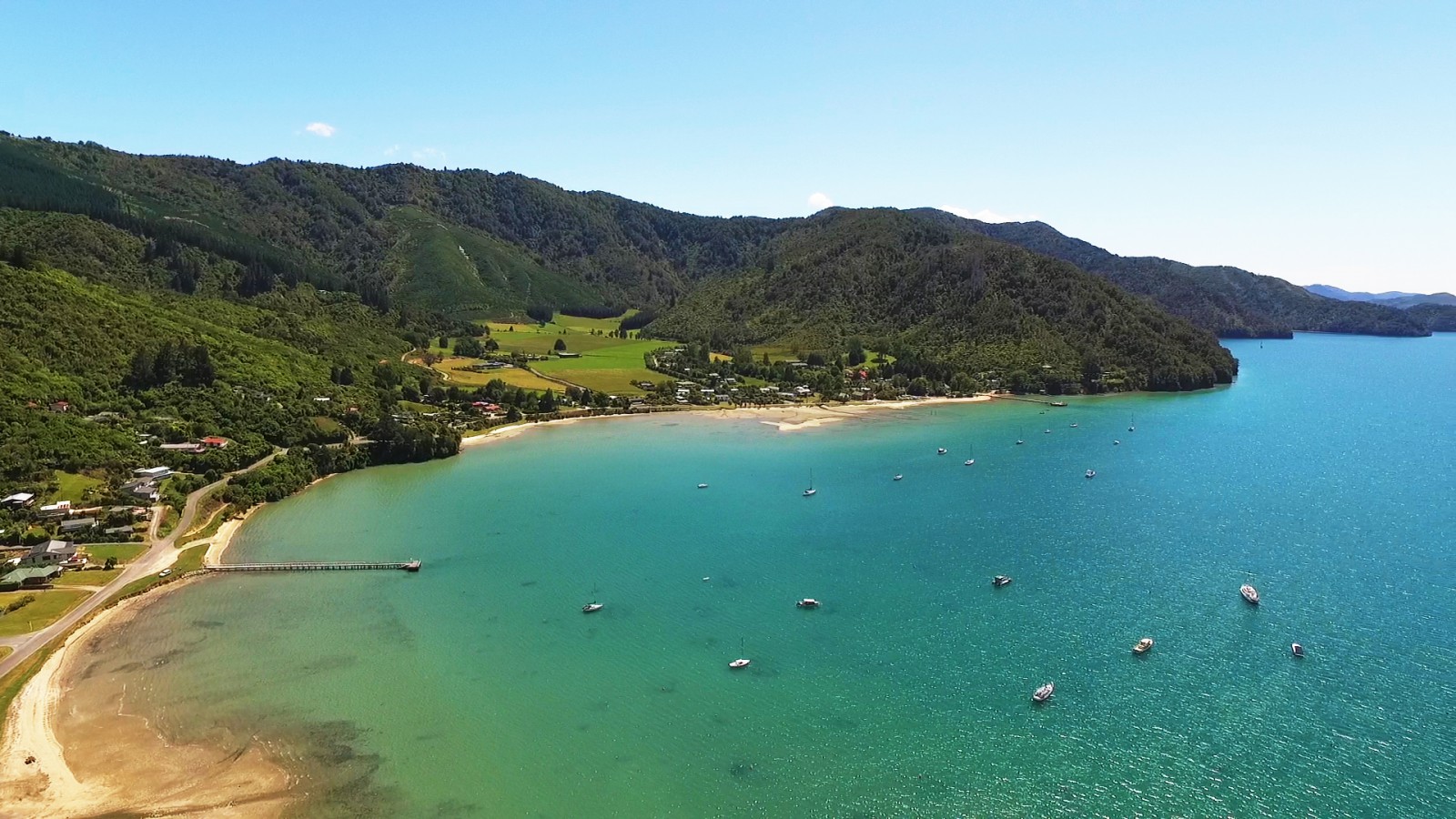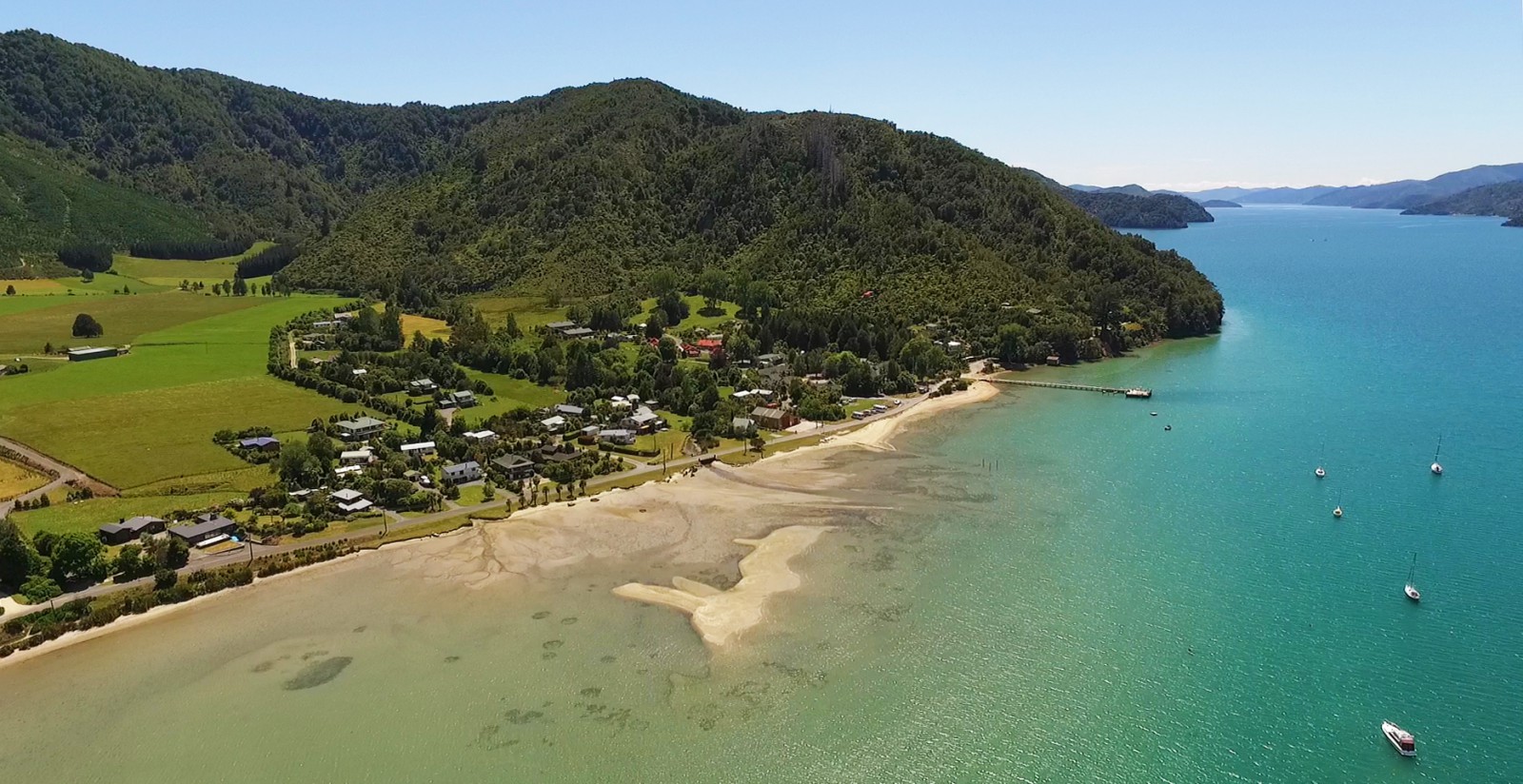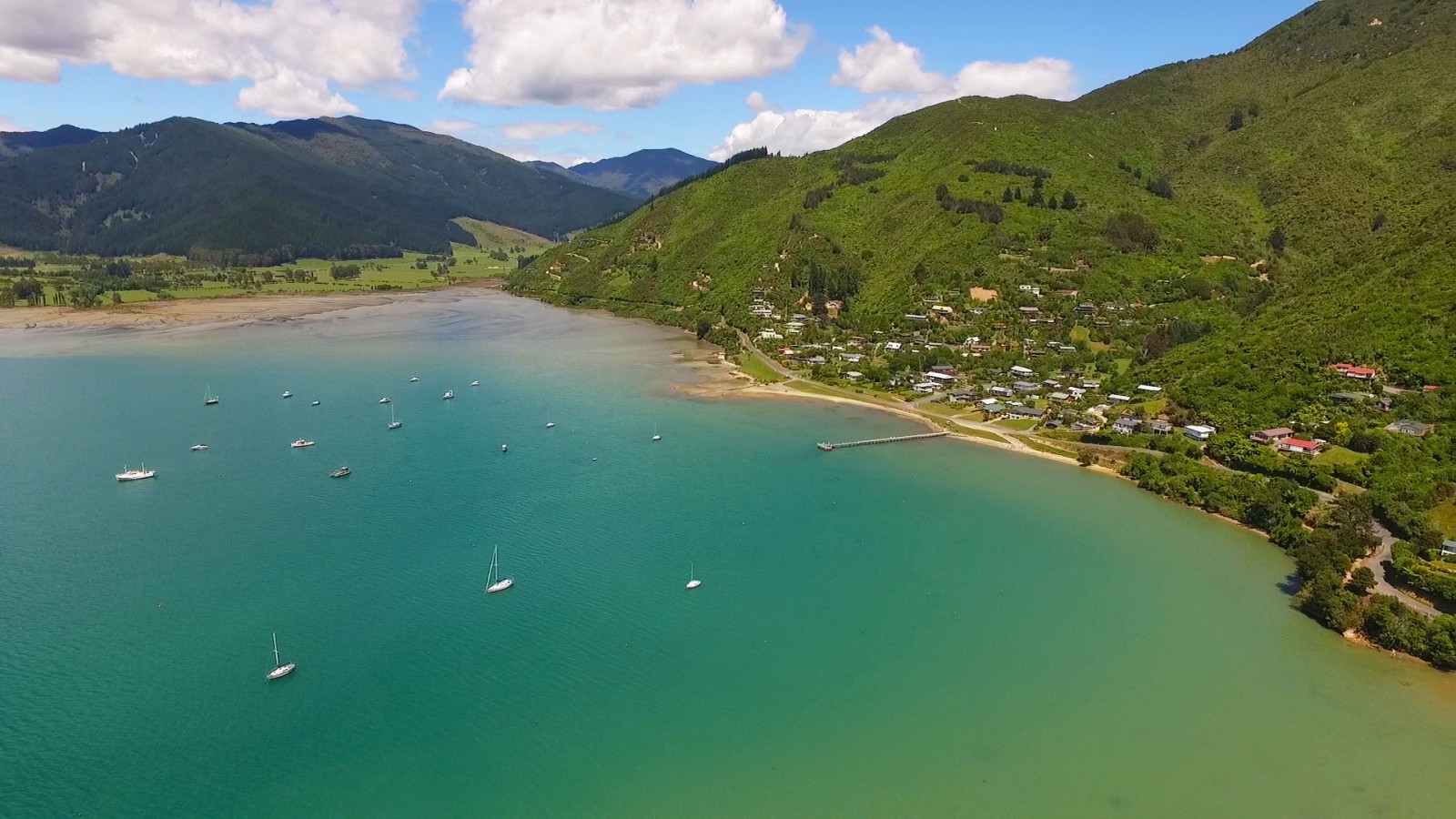The origins of Anakiwa’s name are uncertain but it is likely the name means, Kiwa’s cave. [1] The bay is also known as Thompsons Bay.
The original Māori inhabitants of Anakiwa were Ngāti Rāhiri. Today, other hapū of Te Ātiawa have manawhenua (authority over the land) in the bay.[2]
By the close of the nineteenth century, Anakiwa was a small but bustling settlement. During the 1860s, timber milling was the local industry as land was cleared for agriculture. Farms brought settlers and families to the bay and a school was soon established. In the late 1880s the Mahakipawa gold rush brought a lot of activity to the bay as miners used Anakiwa and surrounding bays as access points to Havelock and the gold mining town, Cullensville.[3]
Arthur and Cradock Beauchamp were issued land in Anakiwa by crown grant in the 1860s. Cradock and his wife, Harriett farmed there until the early 1900s when their son, Herbert took over. In the 1920s the family built a guesthouse, the Anakiwa Homestead. It was a popular and lively destination with travellers for several decades.

Anakiwa Homestead Guesthouse and wharf. Date unknown.
Courtesy, Picton Historical Society
Cradock Beauchamp was the great uncle of New Zealand writer, Katherine Mansfield, who visited Anakiwa with her family. Katherine’s experiences in the Marlborough Sounds are evident in several of her stories.[4]
In 1962 the Anakiwa Homestead Guesthouse was sold to the Outward Bound Trust and the school officially opened later that year. It initially operated from the homestead building and it was not until 1980 that the original buildings were replaced.[5] Today all that remains of the original Beauchamp buildings are plantings of mature English trees.
At present there are approximately 140 private dwellings in the bay, excluding the Outward Bound School complex. The permanent population of the bay is unknown but increases dramatically in the summer months with visitors.[6]
[1] H. A. H. Insull, Marlborough Place Names (Wellington, A. H. & A. W. Reed, 1952) p24.
[2] “Organisation and Governance: Outward Bound at Anakiwa,”, Outward Bound, accessed January 9, 2018, https://www.outwardbound.co.nz/about-us/our-organisation-and-governance/
[3] Loreen Brehaut, The Grove Arm of Queen Charlotte Sound (Picton, Picton Historical Society, 2012) p17.
[4] “Katherine Mansfield – Anakiwa,”, the Top of the South Branch of the New Zealand Society of Authors, accessed January 9 2017 http://www.topwriters.co.nz/katherine-mansfieldanakiwa.html
[5] “Outward Bound at Anakiwa."
[6] “Anakiwa, New Zealand,” Wikipedia, accessed January 9, 2018, https://en.wikipedia.org/wiki/Anakiwa,_New_Zealand













